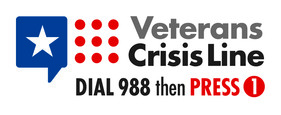
(Photo: rawpixel.com)
A recent study conducted by non-profit Disabled American Veterans, or DAV, revealed a concerning trend: Women Veterans are facing a disproportionately high rate of suicide compared to their male counterparts and civilians.
From 2020 to 2021, the suicide rate among Women Veterans surged by 24.1%, four times higher than that of Male Veterans. The study found Women Veterans are twice as likely as their male counterparts to attempt suicide, with over 50% of such deaths resulting from self-inflicted firearm injuries, a method chosen three times more frequently by Women Veterans than non-Veteran Women.
The study identifies risk factors contributing to the elevated suicide rates among Women Veterans who face a variety of challenges, including military sexual trauma (MST), intimate partner violence, substance use disorder, menopause, and the combination of a prior mental health diagnosis with pregnancy, all of which increases susceptibility to suicidal behavior.
According to the study, one in three women report military sexual trauma during their service. This includes instances of sexual harassment and assault. Additionally, factors such as intimate partner violence and substance use disorder further exacerbate the risk. Approximately, one in five Women Veterans report experiencing intimate partner violence. Women Veterans with active substance use disorder face a suicide risk more than double that of men.
Menopause doubles the risk of depression and corresponds to the highest rates of suicide among American women. Research on the impact of reproductive stages on mental health and suicide risk remains understudied.
DAV is urging the VA to implement changes to better support Women Veterans and enhance suicide prevention efforts. Despite the VA’s innovative predictive model for identifying high-risk Veterans, which predicts suicidality, the model uses males as a normative baseline and overlooks critical factors such as military sexual trauma.
The report identified numerous gaps in mental health care for Women Veterans, including insufficient screenings, intervention measures, access to gender-specific care, and overall awareness. To address these gaps, DAV proposed over 50 policy and legislative solutions aimed at promoting gender-tailored care and improving suicide prevention efforts. Key recommendations included mandatory MST screenings, the establishment of a dedicated hotline for Women Veterans, and improved mental health services in rural areas.
Access to care emerged as a critical issue, particularly for the 25% of Women Veterans residing in rural areas. Limited availability of gender-specific rehabilitation centers and a lack of training among community care providers in identifying and addressing suicide risk further compounded the problem. The lack of mandatory training for community care providers in suicide risk identification and intervention poses a significant barrier to accessing adequate care.
Many Women Veterans were unaware of their eligibility for VA health care and benefits. According to the VA, only 44% are enrolled in VA health care, indicating a need for increased awareness and outreach efforts. The report suggests implementing a three-digit hotline specifically for Women Veterans, similar to the National Suicide Crisis Hotline (988), to ensure timely access to assistance.
Veterans experiencing a crisis are reminded to call 988 for assistance.












